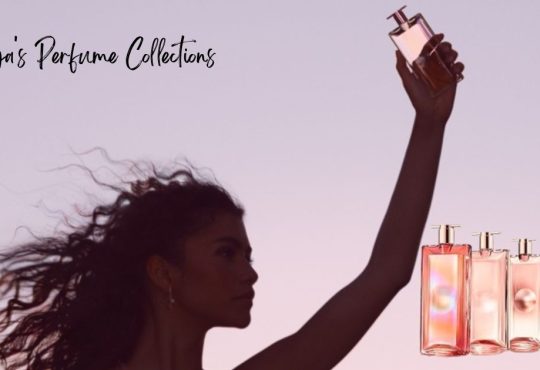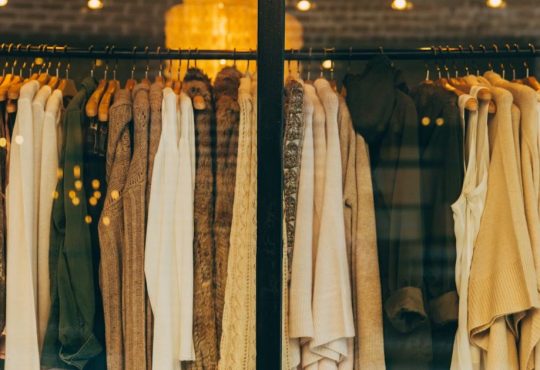More than ever, people are seeking accessories that not only look good but also serve a purpose. They want pieces that also reflect values — caring for the planet, helping communities, using better materials, and being mindful about production. Sustainable accessories are no longer niche. They are becoming must-haves in wardrobes worldwide. From jewelry and bags to phone cases and shoes, sustainable accessories are making a significant impact in 2025. This article explores what is driving this change, the materials and innovations trending, and how you can choose accessories that are stylish, ethical, and built to last.
Why Sustainable Accessories Matter
Ethical Production and Labor Practices
Many conventional fashion accessories are produced in factories or processes where workers may be underpaid, exposed to harmful chemicals, or not provided with safe working conditions. Choosing a brand that cares about its supply chain, pays fair wages, and ensures safe working conditions gives your purchase a ripple effect. It isn’t just about what you wear — it’s about who made it and how.
Reduced Environmental Impact
Materials and production methods matter. When accessories are made using recycled materials, upcycled waste, or bio-based fabrics, they help reduce waste, pollution, and dependency on new, resource-intensive materials. For example, recycled plastic bottles are turned into bag fabrics or straps, utilizing products that would otherwise be destined for landfills or the ocean. Also, biodegradable alternatives help ensure what you buy doesn’t linger in landfills forever.
Longevity and Quality Over Trend Cycles
One of the strongest arguments for sustainable accessories is durability. A well-made piece that lasts for years is more sustainable than many cheaper pieces that are often replaced. Good craftsmanship, high-quality materials, and designs that aren’t purely trend-driven mean the accessory stays relevant and resilient. Over time, investing in better quality saves money, reduces waste, and helps avoid impulse purchases.
Key Materials and Innovation Trends
Here are some of the materials and methods that are making big waves right now:
- Recycled and Upcycled Materials: Brands are utilizing recycled metals, plastics (such as PET bottles), and repurposed fabrics to craft their accessories. It transforms waste into something beautiful.
- Vegan Leather Alternatives: New leather substitutes are emerging, including Piñatex (made from pineapple leaf fibers) and materials made from mushrooms (mycelium). These materials avoid animal cruelty and reduce some environmental strain from traditional leather processes.
- Natural, Organic, and Low-Impact Fabrics, including hemp, organic cotton, linen, and plant-based materials, are experiencing a resurgence. These require fewer pesticides, use less water, and often have more natural aesthetic textures.
- Circular Materials and Closing the Loop: Some manufacturers are designing accessories to be circular — meaning they can be reused, recycled, or composted at the end of their life. This includes fully circular materials, biodegradable components, and designs that facilitate disassembly.
- Low-Impact Dyes and Ethical Coloration: The way we color accessories is also under scrutiny. Natural dyes derived from plants, roots, or fruits, along with low-toxicity chemical processes, are becoming more standard. This lowers environmental pollution and protects artisans and local ecosystems.
Standout Brands and Artisan Stories
Here are some brands and makers that illustrate how sustainable accessories can be both stylish and responsible.
- Veja: This footwear and accessories brand from France uses organic cotton, natural rubber, recycled plastic bottles, and fair trade practices. They are a clear example of integrating sustainability into both materials and ethics.
- Baggu: Known for making reusable shopping bags, totes, and accessories using recycled materials. Their designs are simple, functional, and durable — qualities that boost sustainability.
- Xita: A brand from Botswana that uses recycled and upcycled materials, leather remnants, and brass to make bold, sculptural jewelry. Their designs are narrative-driven and celebrate identity through sustainable methods.
- Local artisans in places like the Philippines are creating eco-friendly products like sneakers using natural rubber and fabrics (some plant-based) and jewelry pieces that support environmental causes. These small-scale efforts often combine community benefit with sustainability.
How to Choose Sustainable Accessories Wisely
If you are interested in purchasing eco-friendly accessories, consider the following key points. These tips help you avoid greenwashing and ensure your purchase aligns with your values.
Check the Materials Carefully
Look for recycled metals, organic fabrics, vegan leather options (such as Piñatex or mushroom leather), sustainable dyes, and materials that incorporate circular design principles. If the brand can demonstrate the origin of its materials, that is a great sign.
Look for Certifications and Transparency
Certifications such as OEKO-TEX, Global Recycled Standard (GRS), FSC certification for wood or paper components, fair trade or artisan craft certifications, and transparent supply chain information are signs that the brand is serious.
Build a Wardrobe or Accessory Collection Around Versatility
Neutral colors, timeless designs, and pieces that can be mixed and matched across outfits offer better value and reduce the need for additional purchases. A versatile, eco-friendly bag or pair of shoes worn often does more good than many trendy items worn once or twice.
Support Brands with Ethical Labor Practices
Supporting artisans, paying fair wages, and ensuring worker safety are key components of a truly sustainable accessory. Sometimes that increases the price, but the impact is important.
Consider End-of-Life and Durability
Choose accessories that are durable for daily wear, and consider how they will be disposed of once they are worn out. Recycled, biodegradable, or repairable pieces are ultimately more beneficial in the long run.
Benefits Beyond the Environment
Why people are embracing sustainable accessories goes way beyond just reducing environmental harm. Here are layers of benefit that often surprise buyers.
- Health and Safety: Using fewer toxic dyes, less chemical treatment, and reduced plastic exposure near the skin (for example, in jewelry, wallet linings, or handbag interiors) can help reduce allergic reactions and hazards.
- Emotional Satisfaction: Owning something that aligns with your values — crafted by artisans, or that contributes positively to your community — gives deeper satisfaction than just owning something flashy.
- Style with Uniqueness: Sustainable and handcrafted accessories often stand out because they are made in smaller batches, often with natural variations and an artisanal character. They can act as signature pieces in your wardrobe.
- Long-Term Cost Savings: Paying more upfront for a durable piece might be more expensive initially, but replacing something cheap often incurs higher costs over time, both financially and environmentally.
What’s Trending in 2025 for Sustainable Accessories
To help you stay ahead, here are trends in this space to watch in 2025:
- Plant-based leathers continue to gain ground. Materials from pineapple leaves, mushrooms, and even apple waste are being refined and used for bags, wallets, and footwear.
- Innovative recycled synthetics like Econyl and other recycled polyesters that look and feel premium, yet reduce waste.
- Minimalist and “slow luxury” designs that avoid flashy, excessive ornamentation, favoring quality over trend. Pieces that can be worn for years.
- Artisan collaborations and local craftsmanship: accessories that tell stories of geography, tradition, and community. These often use local, natural materials and support small economies.
- Zero-waste packaging and production: reducing plastic in tags, packaging, using compostable or recyclable materials, and designing with the end in mind.
How to Incorporate Sustainable Accessories Into Your Wardrobe
Now, let’s discuss how you can incorporate these eco-friendly pieces into your daily style choices.
- Start with one piece — perhaps a bag or a pair of shoes — that you need and can replace with something less sustainable.
- Swap fast fashion impulse buys for fewer, better choices. Quality and craftsmanship often make the accessory more satisfying to wear.
- Maintain and care for your items to prolong their lifespan. Clean responsibly, store well, and repair what you can.
- Buy secondhand or vintage. Many accessories from past seasons are beautiful and already made, which reduces the need for new production.
- Support local makers when possible. You can help reduce your carbon footprint for shipping while also encouraging ethical practices in your own community.
Challenges and Things to Be Aware Of
It is essential to recognize that sustainable accessories are not flawless. Here are some real issues to watch for:
- Some “eco-materials” are priced higher, which may be a barrier for many buyers.
- Greenwashing can hide behind vague claims. Terms like “natural,” “eco,” or “green” may not always mean much without proof or transparency.
- Sometimes performance or durability can vary among materials (for example, some vegan leathers don’t last as long as traditional leather). Assessing reviews and trying to see products in person can be helpful.
- Limited availability in some regions can make choices more challenging or require import shipping, which adds to the carbon footprint.
Making Fashion Choices That Matter
Eco-friendly and sustainable accessories offer a powerful way to align style with substance. When you choose accessories that are crafted ethically, made from better materials, and designed to last, you are making a statement with your wardrobe and with your values. These pieces help reduce environmental harm, support artisans, and bring greater satisfaction and uniqueness into your life.
In 2025, sustainability in accessories is not a trend but a shift in how style is realized. Accessories that make you proud, that feel good to wear, and that look good are possible without compromise. Choose with care. Value craftsmanship. Embrace sustainability. Your accessories can be a reflection not only of your taste but of your impact on the planet.





